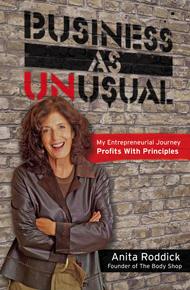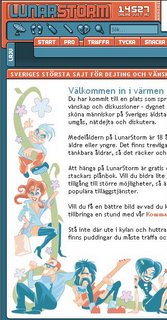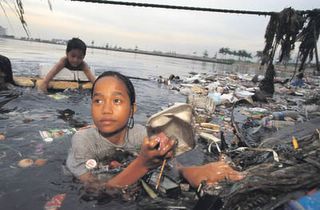 In the dark, as it is not advertised, a new phenomenon is rising in cyber space: Web 2.0. Coined by Tim O´Reilly in 2004, the concept of Web 2.0 has clearly taken a foothold with 9,5 million citations in Google in September 2005 and 240 million citations only two months later. This article presents seven characteristics of future education based on Web 2.0 technologies to be further explored in seven articles to come.
In the dark, as it is not advertised, a new phenomenon is rising in cyber space: Web 2.0. Coined by Tim O´Reilly in 2004, the concept of Web 2.0 has clearly taken a foothold with 9,5 million citations in Google in September 2005 and 240 million citations only two months later. This article presents seven characteristics of future education based on Web 2.0 technologies to be further explored in seven articles to come.What is Web 2.0?
Web 2.0 is a term describing an ongoing transition of the World Wide Web from a collection of websites to a full-fledged computing platform serving web applications to end users. What we are seeing is a new wave of Internet development offering a more dynamic online experience at low cost, using established software tools. By the way, thanks Keso, whoever you are, for offering your photo above for free at Flickr, one fine example of a Web 2.0 company.
Exploiting the value of sharing
Web 2.0 companies exploit the value of sharing and find alternative business models to earn their living. Flickr, for example, was sold to Yahoo with the business case of drawing more visitors to Yahoo.com and their commercial advertisers. E-bay buying Skype was motivated by a similar logic. So instead of selling a product, Web 2.0 companies offers participation for free (at least for basic functions), building value by attracting a crowd for companies selling services and products or private donors wanting to see this happen, for example a Wikipedia. In my view, the need for personal recognition in a mass consumer society is what ultimately supports this change, at least from an end-user perspective.
Google, the next Microsoft?
Another example is, of course, Google, offering free services supported by advertising, a very different way of doing business than Microsoft. Google gives up on the big customers (initially) and go for the 80% whose needs are not met. In return of giving up something expensive and considered critical (Google´s search function), they got something valuable for free that was once expensive, as marketing on the web. Through customer-self service (Google Adsense), Google reach out to the entire web, to the edges and not just the centre, to the long tail and not just the head. The future norm is predicted to be just this: tapping into applications as services over the web, rather than using pieces of software loaded on computers.
Front figures on the web
Other successful companies in the Web 2.0 spirit are: Salesforce.com, Skype, e-bay, Amazon, Apple, along with a number of start-ups offering various tools of participations, such as:
i) writely - using the web as a word processor
ii) jotspot - co-creating web-pages, also known as wikis
iii) blogger - enable private web logs, or blogs
iv) flock - free, open source web-browser
v) fon - sharing wifi broadband access
vi) del.icio.us - social bookmark management, also known as tagging
Seven core competencies
Tim O´Reilly identifies seven core competencies of Web 2.0 companies:
1) Services, not packaged software, with cost-effective scalability
2) Control over unique, hard-to-recreate data sources that get richer as more people use them
3) Trusting users as co-developers
4) Harnessing collective intelligence
5) Leveraging the long tail through customer self-service
6) Software above the level of a single device
7) Lightweight user interfaces, development models, AND business models
Seven characteristics of future education
How are schools and universities to adapt to the influence of Web 2.0 technologies, manifested through an increasing student usage of these technologies outside the classroom for social networking, information gathering and value creation? In light of the seven core competencies identified by O´Reilly, I believe more attention has to be placed on helping students co-create:
1) Student driven educational services converting students/employees into customer driven content providers rather than teacher driven content receivers, using Web 2.0 technologies to offer educational services, financed through Google Adsense, to potential customers world-wide.
2) Professional networks of trust enabling greater outreach and feedback on the use of student core competencies, with trust as the unique, hard-to-recreate asset, and increasing network value as more people join in.
3) Tailor-made learning modules adapted to the needs of identified customers students are trying to help, thus having people outside the classroom as co-developers of course content when defining what students need to know.
4) Share points of knowledge exploring new topics through collaborative learning, using Web 2.0 technologies to build common understanding through developing the collective intelligence of a web community, for example tagging and wikis.
5) Niche products and services for specialised market needs and test them in practice, as part of their educational program, developing their own customer self-service applications for real problems, drawing upon existing Web 2.0 technologies to administer their services.
6) Integrated educational packages that brings on-campus education into the streets, like pervasive gaming where computer games are played in reality and not sitting in front of the computer, using mobile technology as well as positioning and sensors. For example making the City as Theatre or Nature as Laboratory.
7) International development clusters where core competences in one part of the world tackle mass markets needs for low cost products in another part of the world, like Design that Matters with its worldwide system enabling the citizen sector, university students, and businesses to jointly innovate for social change.
Creating conditions for open innovation
The trick for organisations seems to be to have external persons complement internal efforts of applying core competencies in practice by establishing a web platform for open innovation. If successful, a number of specialised services will arise that uses the organisation’s core data, thus creating a better position to fight off competition and attract new partners.
Coming up
For more on the seven future forms of education outlined above, follow this blog. The next one coming up is: "1) Scalable educational services".
References:
- Nutall, C. “Way of the web: start-ups map the route as big rivals get Microsoft in their sights”. In Financial Times (2005-11-17), pg 11
- Torstensson, H. “Därför ska du göra din sajt till en plattform” [That´s why you should make your site into a platform]. In Internet World(December 2005), number 10, pg 63










